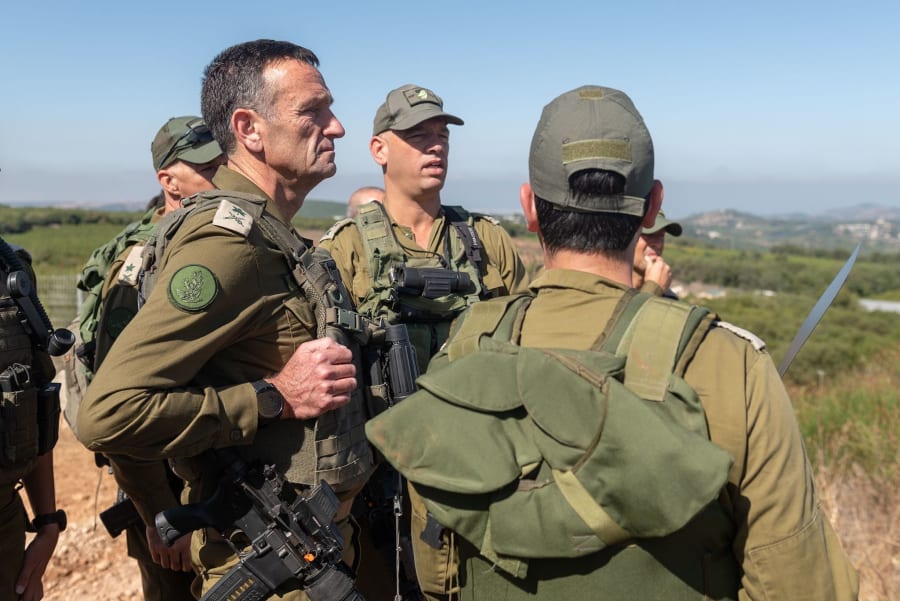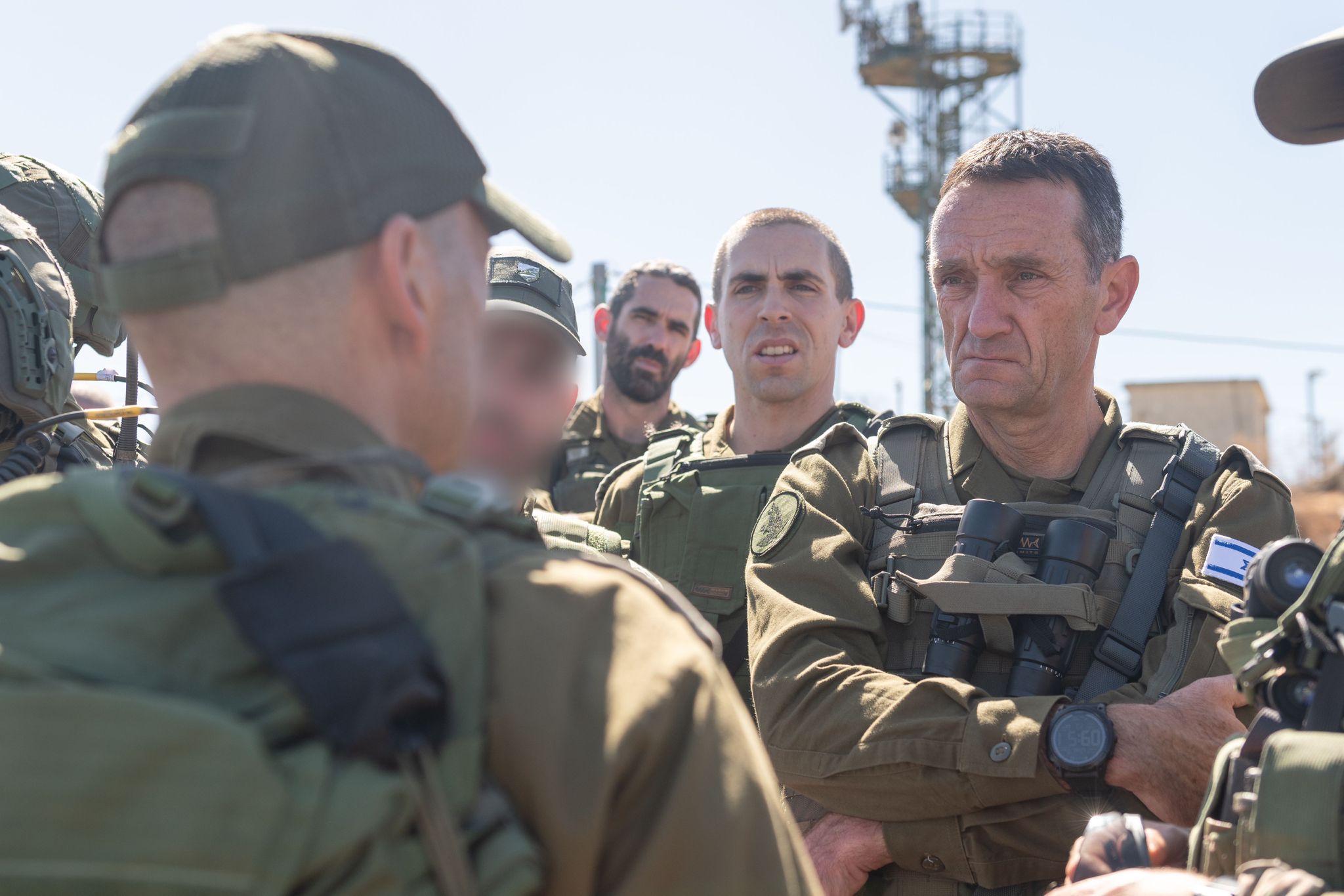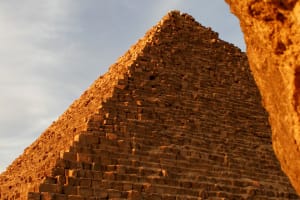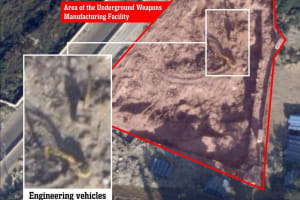Top military generals visit Israel-Lebanese border amid escalating tensions with Hezbollah
IDF has set up additional border fencing and barriers in recent months

IDF Chief of Staff Lt.-Gen. Herzi Halevi visited the Lebanese border on Wednesday, in the wake of recent conflict escalations with the Hezbollah terror group.
Halevi was accompanied by Israel Defense Forces Northern Command Maj.-Gen. Uri Gordon and Galil Division Commander Brig.-Gen. Shai Kalfer
The three top military officials assessed the status of the IDF’s project to build a more complete fence along Israel's northern border with Lebanon.
Gordon and Kalfer updated Halevi on recent incidents at the border, as well as their strategy for defending area residents from Hezbollah.
The visit came two weeks after the terror group released their surveillance footage showing Halevi not wearing a helmet during his last trip to the border, sparking criticism from the IDF for allowing the army chief to be tracked and filmed without a helmet. However, the IDF reported that Halevi was hundreds of feet away in a secure zone where none of the soldiers wore helmets.

The IDF said it has added dozens of meters of additional fencing and obstacles in recent months, and its current strategy includes new technologies for disrupting Hezbollah's attempts to undermine the border.
Israeli Prime Minister Benjamin Netanyahu met with security chiefs to discuss issues at the northern border on Sunday, as videos circulated on social media showing Hezbollah supporters crossing the UNIFIL boundary, known as the Blue Line. The videos showed supporters jumping up and down and waving flags, protesting Israel’s claim to the area.
The United Nations peacekeeping mission, UNIFIL, acknowledged that Hezbollah set up tents on Israel’s side of the Blue Line, which marks the UN-recognized border located between the northern part of the Ghajar village in Lebanon and the southern part of the village in Israel. The two countries do not have a formal border due to territorial disputes.
In May of 2000, Israel withdrew from southern Lebanon and Ghajar was split in two by the UN. However, in recent months, Hezbollah has increased activities to challenge the Israeli claim to the area, as well as disputed parts of the UN’s Blue Line across the border.
Last weekend, Hezbollah Chief Hassan Nasrallah made threatening remarks for the second time in recent weeks against Israel. The threats were likely in response to Israel’s potential decision to remove a Hezbollah outpost in the Mount Dov area, as well as National Security Minister Itamar Ben Gvir’s visit to the Temple Mount.
The IDF and the Israeli government’s attempt to use prolonged diplomatic efforts to convince the terror group to withdraw from the area and avoid war has been met with a refusal to cooperate.
Last weekend, Nasrallah called Israel a “cancerous gland” and said the entire Middle East will not rest until it is removed.
The head of the terror organization further warned that Palestinians today "believe more than ever in the resistance and on the axis of resistance." He emphasized that Hezbollah "stands by the Palestinians with everything we possess."
In mid-July, IDF soldiers fired warning shots to distance some 20 Lebanese citizens who crossed around 80 meters (over 250 feet) into Israeli territory in the Mount Dov area.
The IDF had previously struck sites in Lebanon after an anti-tank missile was fired from Lebanon toward Ghajar.

The All Israel News Staff is a team of journalists in Israel.














